Jubilee web series review: Sidhant Gupta hits it out of the park in Vikramaditya Motwane’s beautiful ode to the golden era of Hindi films
Aparkshakti Khurana, Prosenjit Chatterjee, Wamiqa Gabbi, Aditi Rao Hydari, Nandish Sandhu, Ram Kapoor and Shweta Basu Prasad headline Motwane’s Jubilee, currently streaming on Amazon Prime Video.
Part one of Jubilee is currently streaming on Amazon Prime Video
Last Updated: 02.56 PM, Apr 09, 2023
Story:
Vikramaditya Motwane’s most recent offering titled Jubilee may appear to be an amalgamation of several parallel storylines and conflicts on the surface, but at its core, the web series is an interesting tale of the art and the artist, that explores the unexpected extent to which the artist can go to see his art succeed, cleverly disguised as a beautiful ode to the golden era of Hindi film industry. The term ‘artist’ here can be used for most of the characters that inhabit this carefully created, exquisitely crafted, nuanced world of Motwane.
On one hand, there’s the movie mogul Srikant Roy (Prosenjit Chatterjee) who can’t stand to see his studio – Roy Talkies fail, even if it comes at the cost of his failing marriage with his wife and business partner Sumitra Kumari (Aditi Rao Hydari), who is also the only female superstar in an industry dominated by men. On the other, there’s Roy’s trusted aide Binod Das (Aparshakti Khurana), who secretly dreams to be an actor, while being at the periphery of showbiz as a lab assistant at Roy Talkies.
There’s also Niloufer Qureshi (Wamiqa Gabbi) – a famous courtesan from Lucknow who aspires to make it big in the movies after her life gets uprooted post-Partition. While Jamshed Khan (Nandish Sandhu) is torn between his love for Sumitra and the fame and glory that would follow if he takes up acting at Roy Talkies, Jay Khanna (Sidhant Gupta) is a playwright from Karachi who, along with his family, is initially struggling to survive in a refugee camp in Sion (Mumbai) after Partition and eventually wants to become a filmmaker.
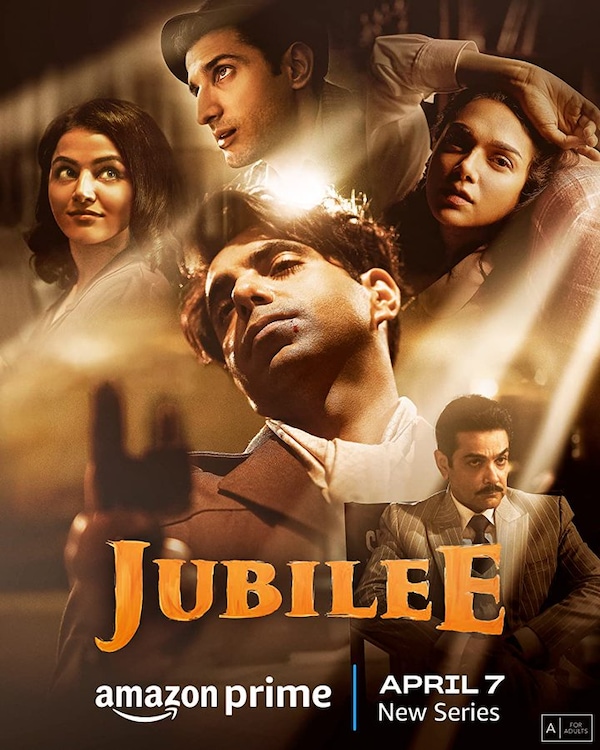
When fate doesn’t give Binod a chance to become the movie star he aspires to, he decides to take matters into his own hands and snatch it from destiny. He becomes the persona that fits the “myth” of the superstar called Madan Kumar – the next poster boy of Roy Talkies. The 10-episode long web series revolves around the themes of dreams, aspirations, struggles, scandals, ambitions, jealousy, greed, love, betrayal, extra-marital affairs, revenge, guilt, and compromises (among other things) that drive the motives of its characters that end up taking you on a cherished trip down the memory lane to an era that almost seems frozen in time.
Review:
Motwane and his co-creator Soumik Sen suck you into the magical world of cinema in the late 1940s right from the very first shot of Jubilee. It’s their labour of love for the moving pictures and that’s evident in the pilot episode itself. Motwane takes his own sweet time to establish and build his characters – which are created by taking traits and instances from multiple real-life historic figures who ruled the industry back in the day. The series abounds in references and easter eggs that will definitely be a treat for any cinephile. There are instances that will leave you wondering ‘which star/instance is this scene based on’ in almost every episode and that, somewhat, also helps in powering through the easy, laid-back pace with which the 10-episode long (each clocking in about 50 minutes) show progresses.

The makers subtly doff their hats to legends like Raj Kapoor and Nargis (Shree 420), Dilip Kumar, Dev Anand, and Madhubala among others throughout the series. The characters of Srikant Roy and Sumitra Kumari, played to perfection by Prosenjit Chatterjee and Aditi Rao Hydari respectively, are seemingly inspired by Himanshu Rai and Devika Rani. Despite so many parallel storylines and sub-plots involving the Russians and Americans coupled with touching upon important socio-political events, and important milestones in filmmaking (like the introduction of playback singing and cinemascope), the makers never lose sight of the characters that inhabit the world they have created. Every character gets their moment to shine – either by way of their dialogues or by way of their silences.
Silence, in fact, plays a larger role in Motwane’s cinematic world (watch Udaan and Lootera, if you haven’t already). There are instances where the silence between two characters does most of the talking in Jubilee and you can’t help but wonder whether any number of heavy-weight dialogues would ever be able to do better justice to that scene. Sample the one where Srikant Roy confronts his wife Sumitra Kumari on a train. Or the one in which Shamsher Walia (Ram Kapoor) parts ways with Jay Khanna (Sidhant Gupta) when the latter decides to work with Roy. Or the one in which Niloufer (Wamiqa Gabbi) keeps dialing the phone in order to speak with Jay, while she’s waiting to get married to him (This one has my heart). Pure gold! It also helps that for the first time in a long time, there’s no rousing background score to ‘make’ you feel a certain way. Mad props to Alokananda Dasgupta for keeping it subtle, yet effective enough so that it doesn’t become overpowering to take away from the impactful performances by the actors.
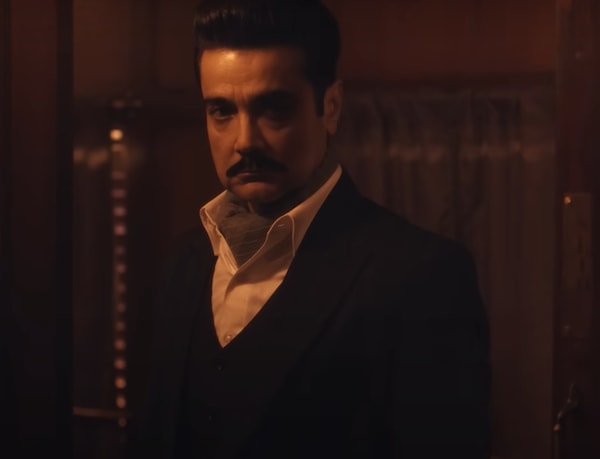
Coming to the writing, Atul Sabharwal ensures that every character gets to deliver at least one crackling line, laced with pearls of either wit or wisdom. Whether it’s Binod’s “Industry mein jo chup rehta hai, lamba chalta hai” or Srikant’s “Waqt ki kya auqaat ke woh hamse aage nikal jaye” or Sumitra’s “Sumitra Kumari ke cup se chai aur glass se sharaab – kabhi kisi ne mana nahi kari” or Niloufer’s “Film banana ke liye kisi na kisi ke sath toh sona hi padta hai na – ya shareer se ya imaan se…” Forget the principal characters, in one of the scenes even a cobbler sitting on the roadside gets a line like “Jispar uparwala khud chappal barsa raha ho, ham uski majboori ka faayda nahi uthate.” These are but a few samples of gems that adorn this beautifully written series. One may argue whether people used expletives so often back then, or if people really spoke in this manner, but what the heck, give me a well-written scene with the exchange of such dialogues that uplift the same and I’m sold.
What remains the highlight for me is that, when it comes to dialogues, Sabharwal knows when to give the characters their cherry on the cake (read their crackling one-liners), when to keep them devoid of a meal (their silences) and when to give them just enough that the viewers are left longing for more (case in point: a scene involving two characters who just utter “Uff” in their own ways, conveying so much more).
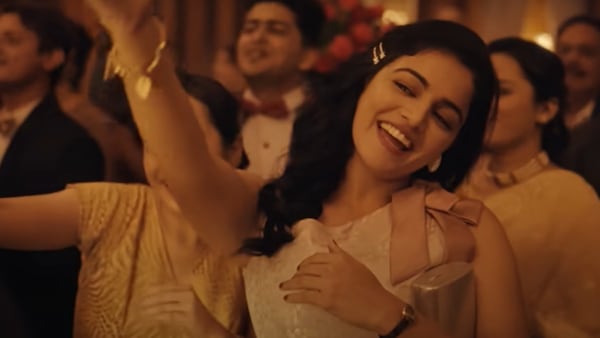
Trust Motwane’s team to really do their homework right when it comes to recreating a bygone era. The production design by Mukund Gupta and Aparna Sud, Art Direction by Yogesh Bansode and Priti Gole, and Costumes by Shruti Kapoor really work in tandem to transport you to the era of the 1950s. Every little, seemingly insignificant, detail has been captured and portrayed with nuance. How the earthy (ceramic) tea cups in the Roy Talkies canteen differ from those (expensive bone-china ones) that are immaculately placed atop Sumitra’s office table, Jay Khanna’s high-waist trousers and loose shirts in sharp contrast to the neat suits of Madan Kumar/Binod which pale in comparison to the sharp ones of Srikant – every possible detail has been paid elaborate attention to. Not even a slick of the characters’ hair seems out of place. The opulent sets take you back in time and make you a part of their milieu. Pratik Shah’s cinematography does full justice in bringing these sets and details to life. Every frame is picture-perfect, captured exquisitely with passion.
Aparkshakti Khurana, arguably in his most notable role yet, does a fine job in bringing the patient but dependable Binod to life. Even though, his character arc doesn’t give him as great a scope as that of Sidhant Gupta, he truly justifies his casting (both as Binod and Madan Kumar) and doesn’t feel like a misfit. He shines in the scenes where he gets to portray his angst, guilt, and outburst but sadly those moments are far and few. His melancholic gaze, shy smile that reeks of guilt, envious eyes in some of the scenes really make you take notice of his range as an actor. It is a joy to see Khurana on screen as a protagonist – a fitting departure from the hero-ka-bestie roles that we’d been accustomed to seeing him in. Shweta Basu Prasad ably supports him as Binod/Madan Kumar’s dutiful wife Ratna. There’s not much for her to do here but she holds her own in the limited scope of her character.
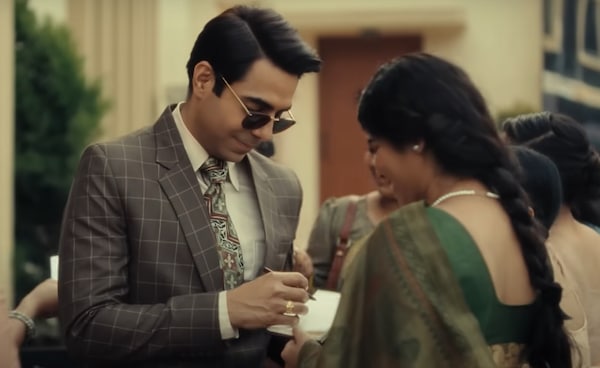
Prosenjit Chatterjee brings a certain charismatic panache to Srikant Roy which he essays with aplomb. We couldn’t think of another actor who’d have been a better fit to play the character with such comfort and stylish ease with which the veteran has done it. There’s a reason he’s celebrated as a veteran actor and it shows even in the way he answers a telephone in his scenes. The doe-eyed beauty Aditi Rao Hydari is graceful and apt as Sumitra Kumari. Her character brings the much-needed glam quotient to the show. It’s a role that fits her like a glove and she does full justice to it as well. However, we feel her character could have been given a better arc and a strong supporting storyline.
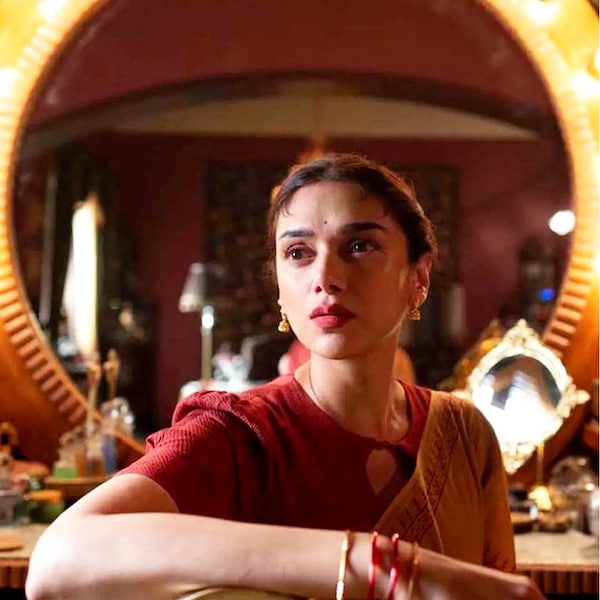
Sidhant Gupta is a revelation in Jubilee. He really hits it out of the park as Jay Khanna. It helps that he gets one of the better written characters with the scope to portray a wide range of emotions and situations on screen. His is arguably the most layered character in the series and Gupta plays his part to perfection with a childlike enthusiasm. The small character traits attributed to him – the way he snaps his fingers with the index finger standing out (almost as if showing a finger to all the hurdles in his way to stardom), the way he does a little victory dance at the slightest hint of joy in his otherwise miserable life, the peculiar way he holds his cigarettes and then some – all add up in a wholesome performance that would be hard to match. A star in the making – watch out for him!
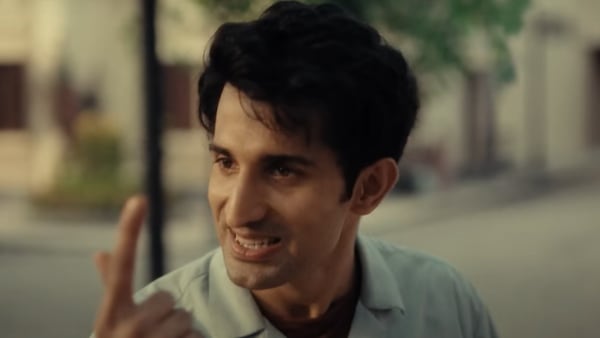
Wamiqa Gabbi comes as a pleasant surprise in Jubilee as the ambitious Niloufer Qureshi. She’s unapologetic about the ways and means by which she ends up rising the ranks in the industry. You laugh with her and also end up feeling bad for her towards the end. Her best scenes are the ones with Gupta’s Jay Khanna – whether it’s the homage to Raj Kapoor and Nargis under an umbrella in the rain or her spat with him on the sets of their film – she aces her part to the T. The always dependable Ram Kapoor seems to be having a lot of fun while portraying the financier-turned-producer Shamsher Walia, who just can’t have a conversation without using any expletives. Nandish Sandhu does a decent job as Jamshed Khan. Arun Govil as Jay’s father may seem like an unexpected casting choice but the actor does a fine job in the limited scenes that he inhabits.
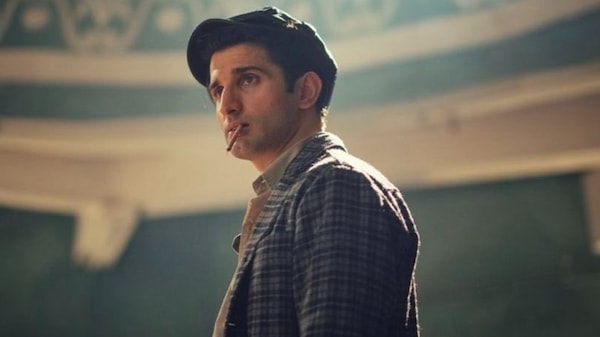
Last, but not least, the music by Amit Trivedi doesn’t quite reach the crescendos that it did in Netflix’s Qala, but fits the era well. The songs have been penned by Kausar Munir. Could the compositions have been better? Sure. Out of the 12 original songs, only Babuji Bhole Bhaale and Saare Ke Saare Akele stayed back with me. Especially, Saare Ke Saare Akele which reminds you of the likes of Dekhi Zamaane Ki Yaari from Guru Dutt’s Kaagaz Ke Phool and Ye Duniya from Pyaasa. Do notice how the song plays in the backdrop as Roy Talkies gets dismantled – almost echoing – Yeh duniya agar mil bhi jaaye toh kya hai… Haunting-yet-beautiful!
Verdict:
If you’re a movie buff, you’d find yourself like a kid in a candy store. Strictly for cinephiles, Jubilee is a must-watch. Does it test your patience? Yes. Is it too long? Yes. Does it feel a bit stretched at times? Yes. Is it worth embarking on this 10-hour-long journey? A hundred times YES!

 Premium
Premium